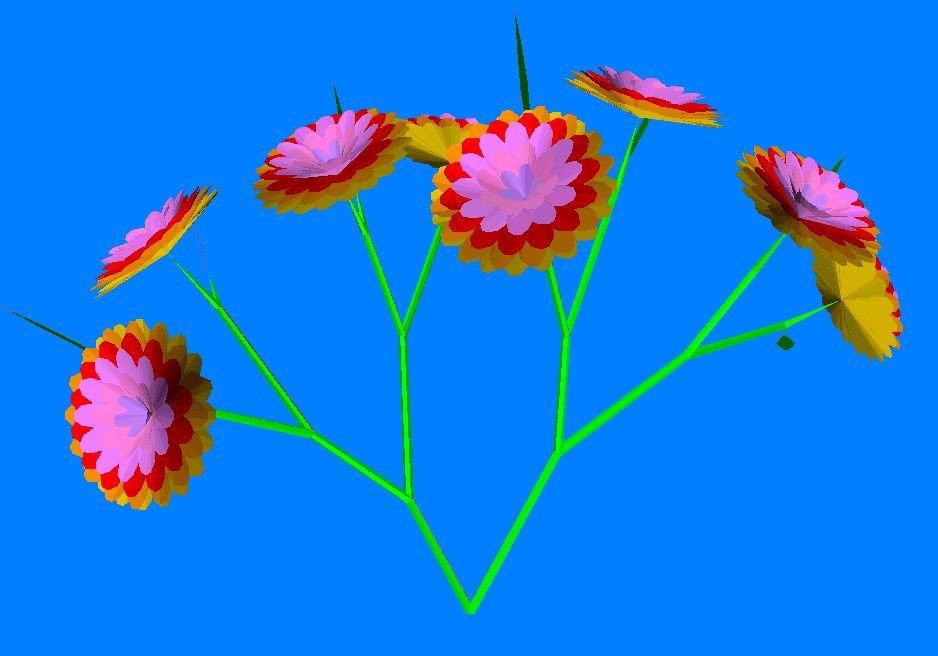
| Home | Ray Traced Models | Anaglyphs | Interactive models | Virtual Flower | About me | Tunes | Jacob Van Eyck | Fractal Tune Smithy |
This flower was made using Virtual Flower.
The best one currently is surely the Cortona VRML client. If you have Cosmo Player, then that one is also good for the P.c. (not for the Mac) - but it is no longer being developed.
There are many VRML 1.0 models around (these ones are 2.0), so though you don't need it for my models, it is worth installing the VRML 1.0 Converter for Cortona.
You can send some of the virtual flowers as musical 3D e-cards, with tunes from my Fractal Tune Smithy here: Music and Virtual Flowers
For some more flowers and animations, showing the most recent options in the program, see the Virtual flower gallery.
The installer for Virtual flower includes most of these flowers, which you can also use as a starting point for making new flowers.
Here are some more trees, flowers and animations:
red and blue ash leaf arrangement
Some are animated - growing or unfolding.
You can also find another couple on the About me page.
Those making VRML scenes may be interested in my Viewpoints Applet and program.
These types of images are often used in 3D Vrml scenes for web pages. You'll find many of them here:
See also Mark Connell's The Most Complete List of VRML 2.0 urls
The more complex scenes in these galleries are slow to rotate and navigate. However, you'll find that the VRML trees I've made here rotate quickly compared with other models of similar complexity. Also, they are fast to download as well, considereing the complexity of the tree. Why is this?
It's because the trees and flowers are made fractal fashion. To explain about fractals - take a tree as an example. It may divide into two branches,and each of those into two, for maybe seven or more layers down to the individual trees. So the twigs have the same kind of structure as the tree itself. A shape that has the same or a similar structure at many different scalings is called a fractal (strictly speaking a mathematical fractal looks the same at infinitely many scalings).
If you did all the branches and twigs of a tree as separate objects, the model would be several megabytes in VRML - an extremely long wait for a download!. It would also be very slow to turn and view from various angles. VRML models that use trees will usually make the tree as a texture, so that it is a flat object meant only to be seen at a distance - if you try to walk round it, it will probably just rotate so that you always see it from one side.
However, it just so happens the VRML language lends itself very well to a fractal definition of an object, some kinds anyway. If you do it that way the tree reduces in size to a few Kb - easy to include on a web page, and quick to rotate when viewing it. In fact, that's the origin of this program - my nephew had converted a 3D tree he made into VRML, but found that it came to several megabytes in size. I figured out a way to make a tree (not the same one, but a tree) in a few Kb instead. This program was the result.
Other VRML fractal tree sites on the web:
Leemon Baird's site: VRML Fractals - The First VRML Fractal Site on the Web - he made them some years before I did. You can make them interactively using an applet.
Fractal Garden includes some examples of another way to make a VRML tree, which is to have a script within the scene that makes it for you. Such trees are fast to download, though slower to rotate than these ones. The shapes of the script based trees can have random elements to them, while these ones can't (as far as I know anyway).